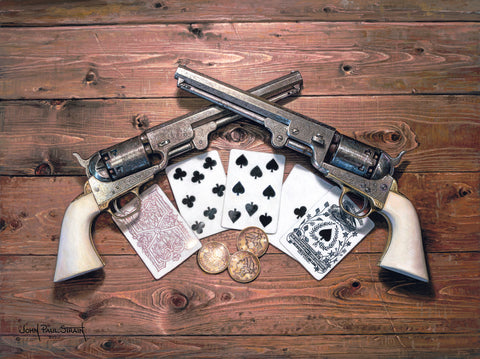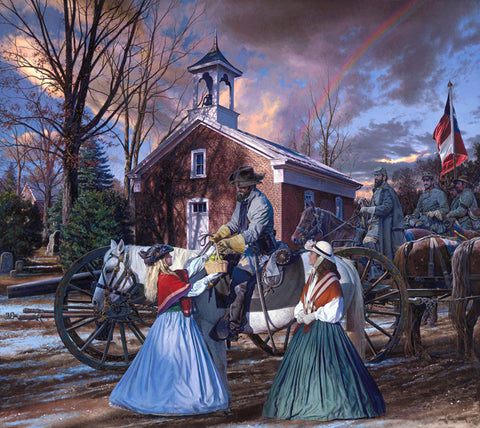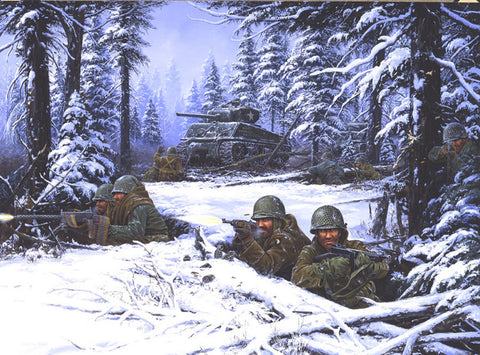CSS Virginia
by John Paul Strain
The CSS Virginia was a marvel to behold as it cruised down the Elizabeth River in March 1862. The ship’s innovative design and construction started a new age of naval warfare with its extensive armor and powerful armaments. The ironclad vessel was some 275 feet long and her beam measured in at 38 feet, 6 inches. The ship drew 22 feet of water and had a wide turning radius. To navigate the maze of shallows and narrow channels of the Elizabeth River, two tug boats were used to help guide the huge vessel. Once in open water the Virginia with her 12 guns would be turned loose on the blockading Federal fleet in Hampton Roads, with the signal, “Sink before you surrender!”
This was her maiden voyage and her cannons had never been fired. Large billows of black smoke poured from her steam engines announcing her presence to the local inhabitants who came out to witness the historic event. “Nearly every man, woman and child in the two cities of Norfolk and Portsmouth were at the same time on their way to Sewell’s point, Craney Island or other points where they could see the great naval combat.”
Back in April 1861, Confederate forces had attacked the Gosport Shipyard in Portsmouth, Virginia (now the Norfolk Naval Shipyard). At the time Gosport was the largest Federal naval port on the East Coast. The southerners desperately wanted to capture the huge stores of war material located there, including over 3000 cannons. With no major infantry force to oppose the southerners, Washington ordered the destruction of the port, boats, and anything of value before it fell into the hands of the Virginia Militia. On April the 20th soldiers started retreating and burning ships as they went, including their own USS Merrimack. The Merrimack burned to the waterline and sank.
The Confederates, who were now in control of the port, began salvage operations. Incredibly the Merrimack was raised and rebuilt as an ironclad by the three best designers in the Confederacy, John Porter a naval ship builder, John Brooke an ordinance expert, and William Williamson a naval engineer. Captain French Forrest oversaw the construction of the new ship, and on February 17th 1862 the completed ironclad was recommissioned as the CSS Virginia, under the command of Captain Franklin Buchanan.
News of the construction of a warship more powerful than anything the Union had quickly reached Washington. The US Secretary of the Navy Gideon Welles assigned the task of building an ironclad to John Ericsson. After just 101 days on Jan 30, 1862 Ericsson’s new ship named the Monitor, slid into Manhattan’s East River.
March 8, 1862 was wash day for the Federal fleet blockading Hampton Roads when they saw the CSS Virginia heading straight towards the fifty-gun frigate USS Cumberland. The Cumberland opened fire, but her shots bounced harmlessly off the Virginia “like India rubber balls”. The Virginia opened fire almost muzzle to muzzle with the Cumberland, sinking her in shallow water. The Virginia went on to set the USS Congress afire, damaged the USS St. Lawrence at a distance of 900 yards, and then drove the USS Minnesota aground. As it was now getting dark and the tide was receding, the Virginia drew off for the night, planning to finish off the Minnesota in the morning. The Virginia had proved she was the most powerful warship in the world, and for that day the Confederate Navy ruled the sea. From the moment the Virginia opened fire on Federal forces every other navy on the earth was obsolete.
At one o’clock in the morning the Monitor arrived at Hampton Roads and drew up next to the battered Minnesota. The next morning at seven o’clock the Virginia headed towards the Minnesota and was intercepted by the Monitor. The epic battle of the ironclads was a sight to behold. The two vessels hammered away at each other so close they collided five times. Neither ship was seriously damaged as the men, blind with smoke, loaded and fired as fast as they could. With ammunition low after four and a half hours the Virginia drew off. The two day engagement would be her only fight, as the Confederates would have to blow her up two months later when the Federals retook Norfolk.
200 S/N Paper Giclées - $225
50 Artist's Proof Paper Giclées - $325
Image Size: 18 1/4" x 24 3⁄4"
Canvas Giclées
100 S/N Studio Canvas Giclées - $275
15 Artist's Proof Studio Canvas Giclées - $325
Image Size 18" x 23 1/4"
100 S/N Classic Canvas Giclées - $525
15 Artist's Proof Canvas Canvas Giclées - $675
Image Size 24 3/4" x 32"
30 S/N Executive Canvas Giclées - $1200
5 Artist's Proof Executive Canvas Giclées - $1400
Image Size 31" x 44






Share this item: